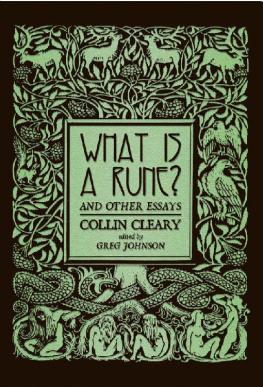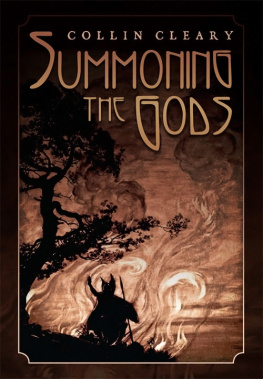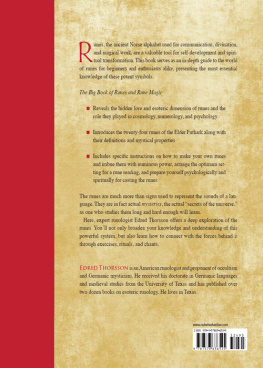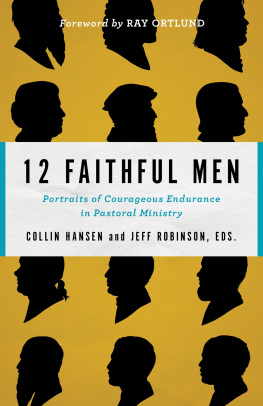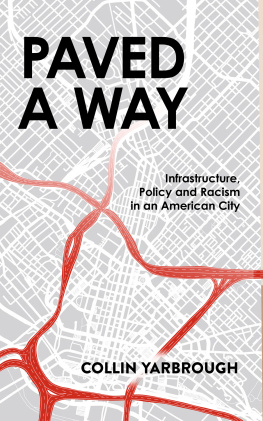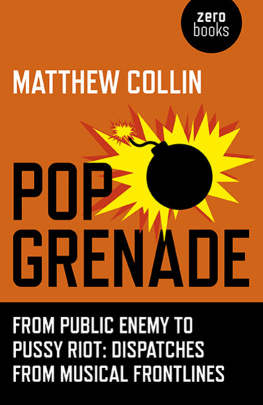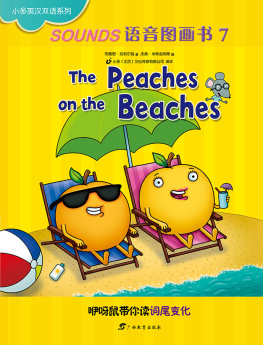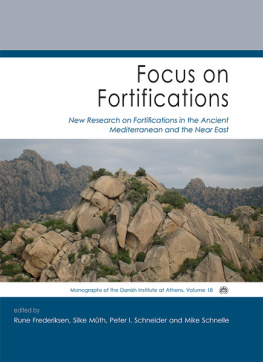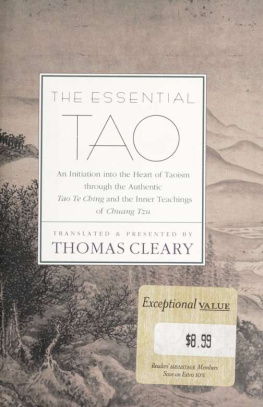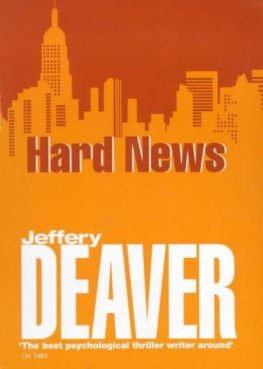Collin Cleary - What is a Rune? & Other Essays
Here you can read online Collin Cleary - What is a Rune? & Other Essays full text of the book (entire story) in english for free. Download pdf and epub, get meaning, cover and reviews about this ebook. year: 2015, publisher: Counter-Currents Publishing, genre: History. Description of the work, (preface) as well as reviews are available. Best literature library LitArk.com created for fans of good reading and offers a wide selection of genres:
Romance novel
Science fiction
Adventure
Detective
Science
History
Home and family
Prose
Art
Politics
Computer
Non-fiction
Religion
Business
Children
Humor
Choose a favorite category and find really read worthwhile books. Enjoy immersion in the world of imagination, feel the emotions of the characters or learn something new for yourself, make an fascinating discovery.
- Book:What is a Rune? & Other Essays
- Author:
- Publisher:Counter-Currents Publishing
- Genre:
- Year:2015
- Rating:5 / 5
- Favourites:Add to favourites
- Your mark:
- 100
- 1
- 2
- 3
- 4
- 5
What is a Rune? & Other Essays: summary, description and annotation
We offer to read an annotation, description, summary or preface (depends on what the author of the book "What is a Rune? & Other Essays" wrote himself). If you haven't found the necessary information about the book — write in the comments, we will try to find it.
What is a Rune? & Other Essays — read online for free the complete book (whole text) full work
Below is the text of the book, divided by pages. System saving the place of the last page read, allows you to conveniently read the book "What is a Rune? & Other Essays" online for free, without having to search again every time where you left off. Put a bookmark, and you can go to the page where you finished reading at any time.
Font size:
Interval:
Bookmark:
W HAT IS A R UNE?
&
O THER E SSAYS
by
C OLLIN C LEARY
E DITED BY G REG J OHNSON
Counter-Currents Publishing Ltd.
San Francisco
2015
Copyright 2015 by Counter-Currents Publishing Ltd.
All rights reserved
Cover image: adapted from W. G. Collingwoods title page for
Olive Brays 1908 translation of the Poetic Edda
Cover design by
Kevin I. Slaughter
Published in the United States by
C OUNTER- C URRENTS P UBLISHING L TD.
P.O. Box 22638
San Francisco, CA 94122
USA
http://www.counter-currents.com/
Hardcover ISBN: 978-1-935965-79-4
Paperback ISBN: 978-1-935965-80-0
E-Book ISBN: 978-1-935965-81-7
Library of Congress Cataloging-in-Publication Data
Cleary, Collin, 1973-
What is a Rune? : and other essays / by Collin Cleary ; edited by Greg Johnson.
pages cm
Includes index.
ISBN 978-1-935965-79-4 (hardcover : alk. paper) -- ISBN 978-1-935965-80-0 (pbk. : alk. paper) -- ISBN 978-1-935965-81-7 (electronic book)
1. Neopaganism--Scandinavia. 2. Scandinavia.--Religion. 3. Runes. I. Johnson, Greg, 1971- II. Title.
BP605.N46C66 2015
299'.94--dc23
2013037993

C OLLIN C LEARY
(Courtesy Max Ribaric/ Occidental Congress )
C ONTENTS
5.
To Edred Thorsson
E DITORS I NTRODUCTION
T HE P HILOSOPHY OF
C OLLIN C LEARY
G REG J OHNSON
This volume is Collin Clearys eagerly-anticipated follow up to Summoning the Gods , his first collection of essays, published in 2011. As one might expect, the present collection develops the ideas encountered in Summoning the Gods , but these new essays (all of which have been written since 2011) give evidence of genuine intellectual growth. In my opinion, and that of the author, they are more philosophically sophisticated than Clearys earlier work. And they form more of a unity than the essays of the previous collection. Indeed, in this new volume we see the outlines of a coherent philosophysomething approaching what used to be called, in bygone days, a philosophical system. There were only hints of this in Summoning the Gods . This introduction attempts to provide readers with a brief guide to this system, weaving together the different strands that one finds in these nine unique essays.
As in Summoning the Gods , the principal philosophical influences on Cleary are G. W. F. Hegel and Martin Heidegger, especially the latter. There is scarcely a page in the present volume that is not marked by Heideggers influence. Indeed, one of the essays included here is an introduction to his thought. And it has the distinction of being quite possibly the best, brief, English-language introduction to the ideas of this notoriously difficult philosopher.
In Summoning the Gods , Cleary insisted that what we need is openness to the gods, which he argued (again drawing upon Heidegger) is founded upon openness to Being. In the essay from which the volume took its title (the most significant of Clearys early writings) he argued that it is in wonder in the face of Being that the gods are intuited. This idea is also central to the essays in the present volume.
While Clearys exploration of what it would mean to know the gods or return to belief in them is of interest to neo-heathens of all sorts, his own allegiance is to the Germanic tradition of his ancestors. However, there was relatively little actual discussion of the Germanic sources in Summoning the Gods . The present volume delves much more deeply into the Eddas , with essays covering the Germanic cosmology and anthropogeny. In truth, every essay in the present volume deals with the Germanic tradition, broadly construed: not just the Runes and the Poetic and Prose Eddas , but also Hegel and Heidegger, as well as Oswald Spengler, Henrik Ibsen, and others. This volume also contains Clearys essay satr and the Political, in which he argues that devotion to the Germanic tradition entails what is now called White Nationalism. This essay proved so controversial that anti-racist heathens, words evidently failing them, embarked upon an 18-month campaign of harassment and intimidation, including throwing a brick and a paint bomb through the window of my downstairs neighbor.
Another concern the present volume shares with the preceding one is the concept of mytho-poetic thought. In fact, this idea will provide a kind of thread that can help guide us through these essays and allow us to see their unity. Mytho-poetic thought is the central concern of the essay with which the volume begins, and from which it takes its title, What is a Rune? This piece was originally an address given at the Rune-Gild Moot in the fall of 2011, where Cleary and several others were made Masters in the Gild. In this essay, Cleary understands the runes as examples of what the Italian philosopher Giambattista Vico (16681744) referred to as imaginative universals: concrete symbols denoting a whole class of phenomena (as opposed to intelligible universals, which employ abstract concepts rather than symbols). Cleary writes that our ancestors literally saw cattle [ Fehu ] as more than cattle; as a manifestation of a fundamental principle or force at work in the universe. In the case of each rune, our ancestors took some feature of their lifeworld (a term Cleary borrows from Edmund Husserls phenomenology) and understood it to stand for or to express something more general or fundamental.
The trouble, however, is that that lifeworld has been lost to usand the Runemasters of old left us no clear accounts of the meanings of the runes. Clearys recognition of this represents, for all intents and purposes, a re-evaluation of the approach he took in earlier essays like Philosophical Notes on the Runes, which were heavily dependent upon Edred Thorssons brilliant but speculative interpretations of the runes. The conclusion to this essay is somewhat bleak. If, in losing the lifeworld of our ancestors, the runes no longer speak to us directly, if they require a philosophical interpretation which is largely groping in the dark, then it seems that we can never truly recover their meaning.
The specific problem of reappropriating the meaning of the runes is not solved in these pages. And it leads Cleary back to the problem he has been dealing with from the beginning: the question of whether we might be ablesomehowto recover the mentality of our ancestors; to begin to see the world as they did. If this were possible, then perhaps the runesand the myths, and the godsmight speak to us again. But how can we enter back into their lifeworldor, perhaps, live and think as if that lifeworld were our own? In the present volume, Cleary makes considerable progress in dealing with this more fundamental problem. He begins by recognizing that if we are to find our way back into the world of our ancestors, we cannot assume we know what a world is.
Thus, his essay The Fourfold begins with Clearys attempt to recover what Heidegger would call the originary sense of world. The term itself is Germanic, and comes from the Old English weorold : wer , which means man + eald , meaning age. So that world literally means age of man or man age. (Here and throughout the volume, Cleary follows Heidegger in using etymology as a philosophical tool.) Our world is not nature or the planet: it is all of this as cognized and interpreted by us. Our ancestors lived in a worlda man agethat was a response of the spirit of our people to their circumstances and surroundings. This response was in the form of mytho-poetic thought, but Cleary recognizes that this term is actually a misnomer; that what we are actually talking about is not so much a form of thinking, as a way of being in the world. As a first step toward understanding our ancestors way of being in the world, Cleary explores Heideggers phenomenology of dwelling ( Wohnen ), which the German philosopher argues is the Being of human beings.
Next pageFont size:
Interval:
Bookmark:
Similar books «What is a Rune? & Other Essays»
Look at similar books to What is a Rune? & Other Essays. We have selected literature similar in name and meaning in the hope of providing readers with more options to find new, interesting, not yet read works.
Discussion, reviews of the book What is a Rune? & Other Essays and just readers' own opinions. Leave your comments, write what you think about the work, its meaning or the main characters. Specify what exactly you liked and what you didn't like, and why you think so.

